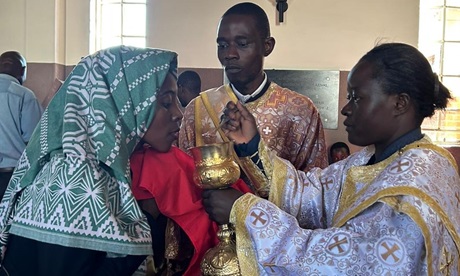On 2 May, the Orthodox Patriarchate of Alexandria and All Africa ordained Angelic Molen as its first modern deaconess in a church near Harare in Zimbabwe.
The Western media has gone a bit mad, calling it “breaking with tradition” and a radical new step forward.
Ordaining women deacons
The usual suspects have trotted out the usual creaky arguments about female diaconal ordination being just a matter of days away in the Catholic church.
But some of our Orthodox brothers and sisters would beg to differ.
I’ve been reading conflicting news accounts from different Orthodox news services about how the process was approved, what for, and how it was done.
It’s made me heave a sigh of relief that the Catholic church is moving in geological time on this issue.
The Orthodox churches have a range of views on deaconesses, and when and how they should be deployed, and what they can and can’t do. So far, they can’t agree with each other.
There’s also a group of Orthodox women – the St Phoebe Centre for the Deaconess, based in the United States – with a familiar feminist twist.
They want women deacons to be fully involved in the Orthodox liturgy and equivalent to male deacons.
But this isn’t how most Orthodox churches see it.
Orthodox differences
It seems that the Catholic church isn’t the only one with a wealthy, educated and privileged minority who think the church should be re-made in their own image.
What I’ve now learned is that many—but not all—Orthodox communities have accepted that deaconesses were part of the early church.
This doesn’t include a group called “The Church of Greece”, who are part of the Greek Orthodox church. They say they’ve never had deaconesses and aren’t about to start now.
But for the others, if it’s a matter of reviving something ancient for modern times, what might that look like? Even the Patriarchate in Africa admits that this is still a work in progress.
There’s a nice distinction in the Orthodox church between chirotony (what we’d call ordination) and chirothesy (‘the laying on of hands’).
Deaconesses were traditionally appointed through chirothesy.
The Orthodox liturgy is also different from the Western rite of Mass.
There’s already been a row because Deaconess Angelic assisted with the distribution of holy communion at her ordination ceremony, which wasn’t meant to be part of her role.
But in the West, we’ve already introduced women readers at Mass, and women as extraordinary ministers of holy Communion.
Women as readers are still quite rare in the Orthodox churches, so we’re streets ahead.
Baptism in Orthodox churches is full immersion. It’s usually for children aged about three, and they also make their first communion and are confirmed at the same time.
In Africa there’s a lot of adult converts to Christianity, including Orthodoxy.
Deaconesses could well assist there with adult female baptisms in a way that’s consistent with their role in the early church.
Deaconesses in Africa could also go into women’s homes and visit them pastorally without causing trouble in male-dominated communities.
So maybe this old practice could work in this specific pastoral situation.
Changing need
The Orthodox authorities are very aware that the role of women deacons became obsolete as things changed.
Like the Catholic church, they moved to mostly child baptisms, and women gradually gained more freedom of movement.
Most of us would recognise that in the Western Catholic church, there’s no urgent pastoral call for women deacons.
We don’t do full immersion baptisms, there’s no stampede of adult female converts, and women have full social equality with men.
We’re already a female-dominated church in the pews—around two-thirds of all regular Mass-goers in Australia are women.
Most of these are feisty souls who come and go as they please and aren’t trapped at home by a patriarchal husband.
We’ve got plenty of priests to manage our very small Mass-going population, even if we do need to spread them out a bit more.
We have extraordinary ministers of holy Communion to help with Sunday Masses and sick calls.
And if you absolutely must preach, get yourself a YouTube channel or a TikTok account. Or a Catholic newspaper column.
Vatican II gave us back the lay vocation and the personal call to holiness.
Thousands of lay people in Australia have already embraced it willingly, and their work in their parishes and communities is bearing fruit.
Reviving women deacons in the Catholic church in the West is pointless—they’re already obsolete. What on earth could they do that isn’t already done competently by lay men and women?
- First published at The Catholic Weekly
- Philippa Martyr is a Perth-based historian, university lecturer and academic researcher.
News category: Analysis and Comment, Great reads.




